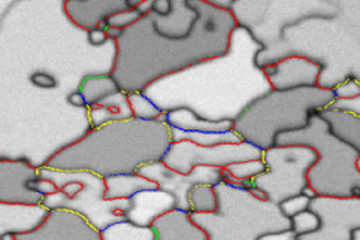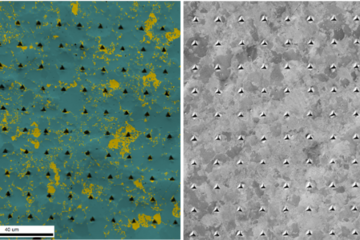All genres
921.
Thesis - PhD
Microstructure and grain boundary evolution in titanium thin films. Dissertation, Ruhr-Universität Bochum (2022)
922.
Thesis - PhD
Atomic-scale characterisation of grain boundary structure and segregation in bcc-iron. Dissertation, Ruhr-Universität Bochum (2022)
923.
Thesis - PhD
Development of combinatorial methods to tailor electrical and mechanical properties of Cu-based thin-film structures. Dissertation, Ruhr-Universität Bochum (2022)
924.
Thesis - PhD
Phase equilibria and phase transformations of Ti–Al–X (X=Nb, Mo, W) alloys for high-temperature structural applications between 700 and 1300 °C. Dissertation, Ruhr-Universität Bochum, Fakultät für Maschinenbau, Germany (2022)
925.
Thesis - PhD
Development of AlCrFeNiTi Compositionally Complex Alloys for High Temperature Structural Applications. Dissertation, Ruhr-Universität Bochum (2021)
926.
Thesis - PhD
On the damage initiation in dual phase steels: Quantitative insights from in situ micromechanics. Dissertation, Ruhr-Universität Bochum (2021)
927.
Thesis - PhD
Structure, chemistry and nanomechanics of grain boundaries in Cu–Ag alloys. Dissertation, Ruhr-Universität Bochum (2021)
928.
Thesis - PhD
Quantum mechanically guided design of mechanical properties and topology of metallic glasses. Dissertation, Fakultät für Georessourcen und Materialtechnik, RWTH Aachen (2020)
929.
Thesis - PhD
Probing dislocation nucleation in grains and at Ʃ3 twin boundaries of Cu alloys by nanoindentation. Dissertation, Ruhr-Universität Bochum (2020)
930.
Thesis - PhD
Development and application of a high-temperature micromechanics stage with a novel temperature measurement approach. Dissertation, Ruhr-Universität Bochum (2020)
931.
Thesis - PhD
Grain Boundary Structure, Phase Transitions and Segregation Phenomena in Copper Alloys. Dissertation, Ruhr-Universität Bochum (2019)
932.
Thesis - PhD
Mechanical properties of the cubic and hexagonal NbCo2 Laves phases studied by micromechanical testing. Dissertation, Ruhr-Universität Bochum (2019)
933.
Thesis - PhD
Solid state dewetting phenomena of aluminum thin films on single crystalline sapphire. Dissertation, RWTH Aachen University (2017)
934.
Thesis - PhD
Towards On-Site Production of Hydrogen Peroxide with Gold-Palladium catalysts in Electrocatalysis and Heterogeneous Catalysis. Dissertation, Ruhr-Universität Bochum, Bochum, Germany (2017)
935.
Thesis - PhD
Dislocation transmission through copper grain boundaries at the micron scale. Dissertation, Ruhr-Universität Bochum, Bochum, Germany (2017)
936.
Thesis - PhD
Al-rich Fe–Al based alloys: Phase equilibria, microstructures, coarsening kinetics and mechanical behavior. Dissertation, Fakultät für Maschinenbau, Ruhr-Universität Bochum, Bochum, Germany (2016)
937.
Thesis - PhD
Micromechanical characterization of lead-free solder and its individual microstructure elements. Dissertation, Fakultät für Maschnenbau, RUB, Bochum, Germany (2016)
938.
Thesis - PhD
Nanostructure, thermal stability and mechanical properties of vapor phase deposited supersaturated Cu–Cr thin film alloys. Dissertation, Ruhr-Universität Bochum, Bochum, Germany (2016)
939.
Thesis - PhD
The mechanical behavior of thin metallic films on flexible polymer substrate. Dissertation, Ruhr-Universität Bochum, Bochum, Germany (2016)
940.
Thesis - PhD
TEM Investigations on Interactions of Dislocations with Boundaries. Dissertation, Department of Physical Metallurgy and Materials Testing, Montanuniversität Leoben, Franz-Josef Strasse 18, 8700 Leoben, Austria, Leoben, Austria (2015)











